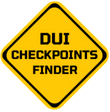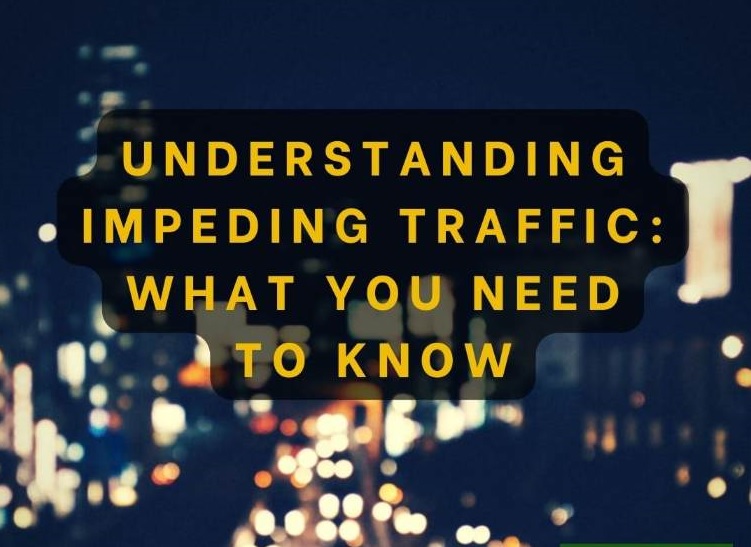What is Impeding Traffic?
Impeding traffic means driving too slowly, making other cars behind you get stuck or delayed. It’s like being in a line where someone in front is moving too slowly, and everyone else has to wait. This can happen on highways, city streets, or any busy road. When traffic is impeded, it can make other drivers upset and cause accidents. So, it’s important to drive at a reasonable speed to keep the traffic flowing smoothly and safely for everyone.
In California, anyone can report if you’re driving too slowly and impeding traffic. This could be another driver, a police officer, or even a pedestrian who notices the slow-moving traffic. Additionally, traffic cameras are not typically used to catch drivers who are impeding traffic because it’s harder to detect this behavior through camera footage.
If you’re caught driving too slowly and impeding traffic, you could face penalties under California Vehicle Code § 22400. The fine for impeding traffic violations can vary depending on the circumstances and the discretion of the issuing officer. However, fines can range from around $100 to $250 for a first offense.
If your car stops and is not starting, causing you to drive slowly or impede traffic, it’s important to pull over to the side of the road as safely as possible. Turn on your hazard lights to alert other drivers and try to restart your vehicle. If you’re unable to get your car running again, it’s best to call for roadside assistance or a tow truck to help you safely move your vehicle off the road. Driving at a slow speed due to a mechanical issue may be understandable, but it’s still important to take steps to minimize the impact on other drivers and prevent potential accidents.
California Vehicle Code § 22400(a)
California Vehicle Code § 22400(a) makes it illegal to drive at a speed that slows down or blocks the regular flow of traffic. This law ensures that drivers maintain a pace that keeps traffic moving smoothly and safely. If you’re caught violating this law by driving too slowly and impeding traffic, you could face fines and penalties. The exact consequences vary depending on the circumstances of the violation and the discretion of the issuing officer. Possible penalties may include fines ranging from $100 to $250 for a first offense, along with points added to your driving record. It’s essential to drive at a reasonable speed to prevent impeding traffic and contribute to the overall safety of the roadways.
Example: For instance, if you’re driving significantly below the speed limit on a highway with no adverse weather or traffic conditions, and it causes a long line of cars to stack up behind you, you could be cited for impeding traffic under CVC § 22400(a).
Understanding Speeding and Impeding Traffic in CVC
While many people are aware of the consequences of speeding, it’s also important to understand the legal implications of impeding traffic. Both speeding and impeding traffic are addressed in the California Vehicle Code (CVC), with specific statutes outlining the rules for safe driving.
- Speeding (CVC § 22350): Speeding, according to California Vehicle Code (CVC) § 22350, happens when you drive your car faster than you should, considering the traffic, the road, and the weather. This law aims to keep driving safe and prevent accidents. If you’re caught speeding, you might get a ticket, which could lead to fines, points on your driving record, and higher insurance rates. So, it’s important to follow speed limits and drive carefully to keep yourself and others safe on the road.
- Impeding Traffic (CVC § 22400): Impeding traffic means driving too slowly and blocking other cars from moving smoothly on the road. It’s like going too slowly in a line of cars, making everyone behind you wait longer. In California, it’s against the law to impede traffic, and you could get a ticket if you’re caught doing it. This law is in place to keep traffic moving safely and prevent accidents. So, it’s important to drive at a reasonable speed and not go too slow to avoid impeding traffic.
VEHICLE CODE § 22400 – Impeding Traffic – Driving Too Slowly
Paragraph: VEHICLE CODE § 22400 addresses impeding traffic and driving too slowly on roadways. It emphasizes the importance of maintaining a speed that allows for the smooth and safe movement of vehicles. Driving excessively slowly can be just as hazardous as driving too fast, as it disrupts the natural flow of traffic.
Charges and Solutions:
- Charges: If you’re cited for impeding traffic under CVC § 22400, you could face fines and points on your driving record. In some cases, it may even lead to a license suspension.
- Solution: To avoid impeding traffic violations, ensure you’re driving at a reasonable speed that allows for the safe flow of traffic. If you need to drive slower for any reason, stay in the right lane and use hazard lights to signal other drivers. Consider pulling over to a safe location if you’re significantly impeding traffic.
By understanding the concept of impeding traffic and adhering to the rules outlined in the California Vehicle Code, drivers can contribute to safer and more efficient roadways for everyone.
FAQs
- What is considered impeding traffic in California?
- Impeding traffic in California refers to driving at a speed that obstructs or slows down the normal flow of vehicles on the roadway.
- Is driving too slowly against the law in California?
- Yes, driving too slowly and impeding traffic is against the law in California, as per California Vehicle Code § 22400(a).
- What are the consequences of impeding traffic in California?
- Consequences of impeding traffic can include fines, points on your driving record, and potential increases in insurance rates.
- How can I avoid impeding traffic?
- You can avoid impeding traffic by driving at a reasonable speed that allows for the safe and smooth flow of vehicles on the road.
- What should I do if I encounter a slow-moving vehicle on the road?
- If you encounter a slow-moving vehicle, you should maintain a safe distance and pass when it’s safe to do so, following all traffic laws.
- Can I be ticketed for impeding traffic if I’m driving below the speed limit?
- Yes, you can be ticketed for impeding traffic even if you’re driving below the posted speed limit if your speed is considered unreasonably slow for the conditions.
- What if I’m driving slowly due to a mechanical issue?
- If your vehicle is experiencing mechanical issues that cause you to drive slowly, you should pull over to a safe location and address the issue promptly.
- Is there a minimum speed limit on California highways?
- While California doesn’t have specific minimum speed limits, drivers are expected to maintain speeds that are safe for prevailing conditions and traffic flow.
- Can impeding traffic lead to accidents?
- Yes, impeding traffic can increase the risk of accidents by causing frustration among other drivers and disrupting the flow of vehicles.
- Are there exceptions to impeding traffic laws in California?
- Exceptions to impeding traffic laws may include situations where road conditions or hazards necessitate driving at a slower speed.
- How can I report someone for impeding traffic?
- You can report someone for impeding traffic by contacting local law enforcement and providing details of the situation, including the vehicle’s description and location.
- What is the difference between impeding traffic and driving below the speed limit?
- Impeding traffic refers to driving too slowly, obstructing the normal flow of vehicles, while driving below the speed limit may be permissible if it’s safe and appropriate for conditions.
- Can impeding traffic violations affect my driving record?
- Yes, impeding traffic violations can result in points being added to your driving record, which may impact your driving privileges and insurance rates.
- Are there signs indicating when I should pull over to let traffic pass?
- While there may not be specific signs, it’s generally a good practice to pull over and let traffic pass if you notice several vehicles behind you.
- What should I do if I’m stuck behind a slow-moving vehicle?
- If you’re stuck behind a slow-moving vehicle, maintain a safe distance, avoid tailgating, and exercise patience until it’s safe to pass.
- Can impeding traffic violations be contested in court?
- Yes, impeding traffic violations can be contested in court if you believe you were wrongly cited or have valid reasons for driving slowly.
- Are there specific times or locations where impeding traffic is more common in California?
- Impeding traffic can occur at any time and location, but it may be more common during heavy traffic congestion or in areas with lower speed limits.
- What should I do if I receive a ticket for impeding traffic?
- If you receive a ticket for impeding traffic, you should review the citation, consider your options for contesting it, and comply with any instructions provided.
- Can impeding traffic violations lead to license suspension?
- In some cases, repeated impeding traffic violations may result in license suspension or other administrative actions by the Department of Motor Vehicles.
- Is there a difference between impeding traffic laws in California and other states?
- While impeding traffic laws may vary slightly between states, the general principles of maintaining a safe and reasonable speed apply universally.
- Can impeding traffic violations be enforced by traffic cameras?
- Impeding traffic violations are typically enforced by law enforcement officers rather than traffic cameras, as they involve subjective judgments about traffic flow and safety.
- Can impeding traffic violations result in criminal charges?
- Impeding traffic violations are typically considered traffic infractions rather than criminal offenses, but repeated violations or extreme cases may lead to more serious consequences.
- What should I do if I encounter a slow-moving vehicle on a two-lane road?
- If you encounter a slow-moving vehicle on a two-lane road, wait for a safe opportunity to pass while obeying all traffic laws and signals.
- How can I determine if I’m impeding traffic or driving at a reasonable speed?
- You can assess your driving speed by considering prevailing conditions, the flow of traffic, and posted speed limits to ensure you’re driving safely and not impeding traffic.
- Can impeding traffic violations be resolved through traffic school?
- Depending on the circumstances and local regulations, some impeding traffic violations may be eligible for resolution through traffic school, allowing drivers to dismiss the citation and avoid points on their record.




